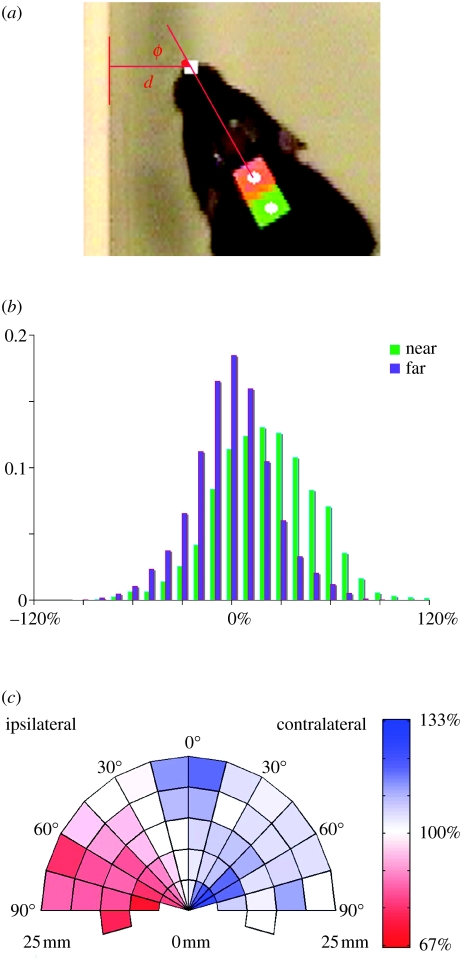Figure 4.
Proximity to a wall induces a systematic bias in whisking asymmetry. (a) Distance (d) and bearing (ϕ) to a single nearby wall was determined by automated tracking of normal speed video, allowing the data to be partitioned into NEAR (d≤25 mm) and FAR (d≥100 mm) subsets, and for left and right whisking amplitudes to be classified as ipsilateral or contralateral. (b) Normalized frequency histograms of NEAR (green, n=3965) and FAR (purple, n=5989) whisking bias (contralateral–ipsilateral amplitude) as a percentage of average whisk strength. The distributions show a strong bias (mean 21.5%) in favour of contralateral whisking for NEAR only. Plots for individual animals are given in the electronic supplementary material. (c) Polar plot of ipsilateral (shown left of the midline) and contralateral (shown right of midline) mean whisking amplitude binned, for NEAR frames only, according to d and ϕ. For the purpose of this display, the nearby wall is always to the left with its bearing and distance mirrored across the midline (frames in which the wall was originally to the right have therefore been reflected in the midline). The colour scale (red–white–blue) shows increasing percentage of average whisk strength. Bins with a count of less than five frames are omitted (3955 frames displayed); included bins represent 5–541 frames each (median 92). The presence of a nearby wall leads to reduced ipsilateral and increased contralateral whisking. Ipsilateral reduction is most pronounced in the range 45–90°, where the rat is more ‘side-on’ to the obstruction. Where the wall lies directly in front (0–15°), but at some distance (d>15 mm), there is evidence of increased whisking bilaterally. Data for individual animals are given in the electronic supplementary material.

